Entering The Resonant Surface at Irvine’s Institute and Museum of California Art feels like walking into an exotic world, perhaps one from another time. The viewer first sees a film, Soul of the Cypress by Dudley Murphy, with Debussy’s Impressionist composition “Prelude to the Afternoon of a Faun” playing in the background.
The 1920 movie is a visual symphony, combining film, dance and music. It features a young woman, clad in Flapper style attire, dancing sensuously among the cypress trees of Point Lobos on the California coast. The woman is a Dryad, a spirit living in the trees, according to Greek mythology. Upon hearing a man playing a haunting tune on a flute, the Dryad is released from the captivity of a twisted cypress — and the two bond erotically. The remainder of the 10-minute film takes the viewer on a journey uniting the immortal woman with the mortal man.
This 101-year-old film forms the backdrop for the 24 paintings in the show. Subtitled “Movement, Image, and Sound in California Painting,” Soul of the Cypress also exemplifies the harmony of visual images, nature and music that characterizes the entire exhibition. Visitors to The Resonant Surface are encouraged to slow down, to hear music within paintings and to envision images and colors within music. To accomplish this, curator Erin Stout, PhD displays a variety of late 19th to mid-20th century California paintings that incorporate rhythmic abstractions, sound and color references, and other multisensory subject matter. She explains that the exhibition investigates our perceptions and other senses beyond vision in art.
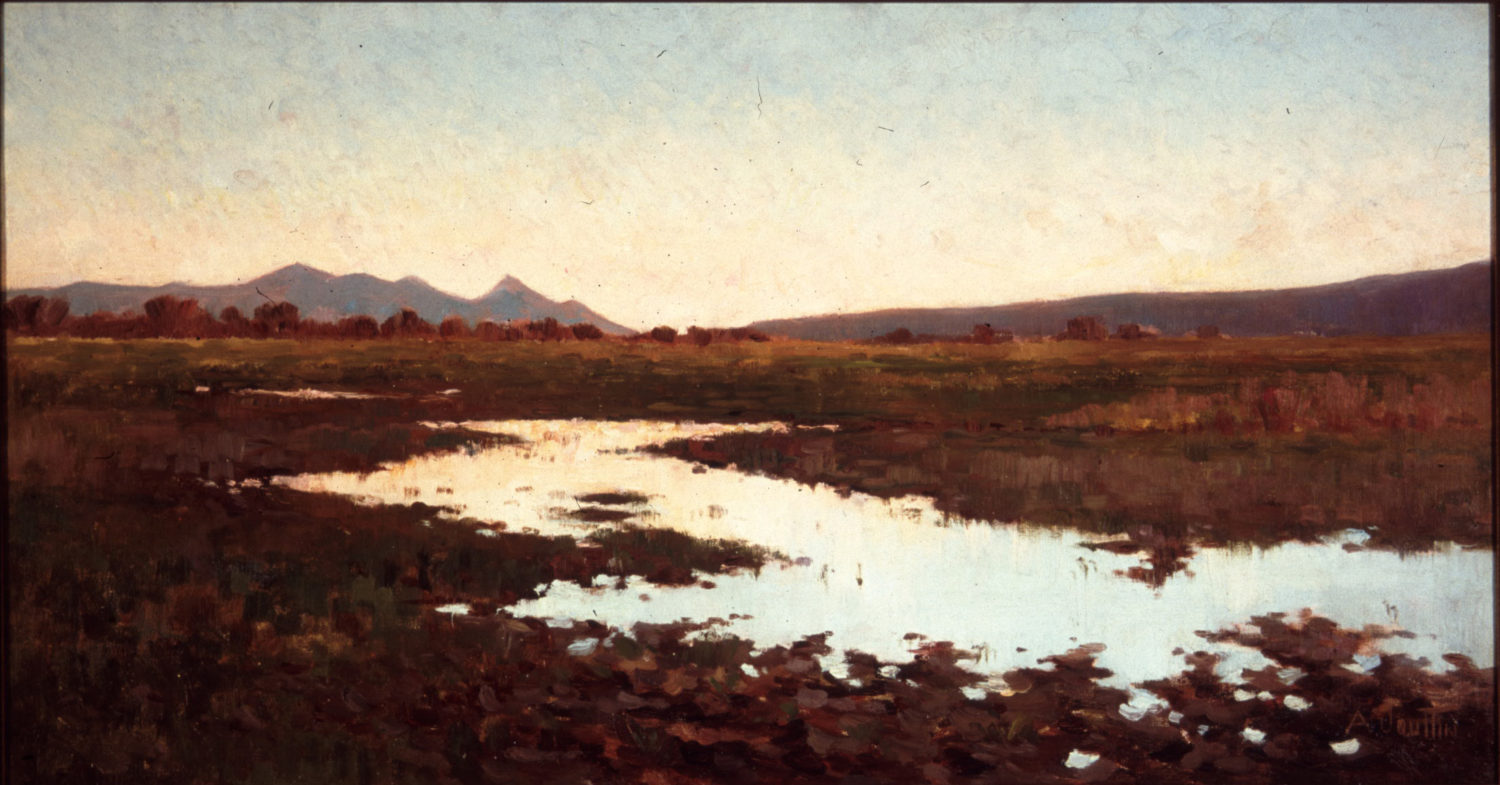
Amedee Joullin: Marsh at Sunset, Near Mt. Tamalpais, circa 1896. Oil on canvas, 16 1/4 x 30 1/4 in. (UC Irvine Institute and Museum of California Art, Gift of The Irvine Museum)
The “Correspondences” section emphasizes the art genre of Tonalism, postulating that music can evoke images, and that it is possible to see sound and hear color. In the Tonalist movement (1880-1920) artists emphasized mood, feeling and the sensation of mist in their work, using grays, blues, browns and golds, and suggesting that their paintings’ forms were associated with music. Marsh at Sunset, Near Mt. Tamalpais (1896) by Amedee Joullin is a broad landscape of a grass and plant-filled marsh in various browns. Calthea Vivian’s Morning Fog (1915) is a golden hued vision of tall trees saturated with the misty morning light. Maurice Braun’s El Cajon Mountain (1917) is a California landscape that depicts grasses, bushes, trees and mountains in earthy colors bathed in sunlight.
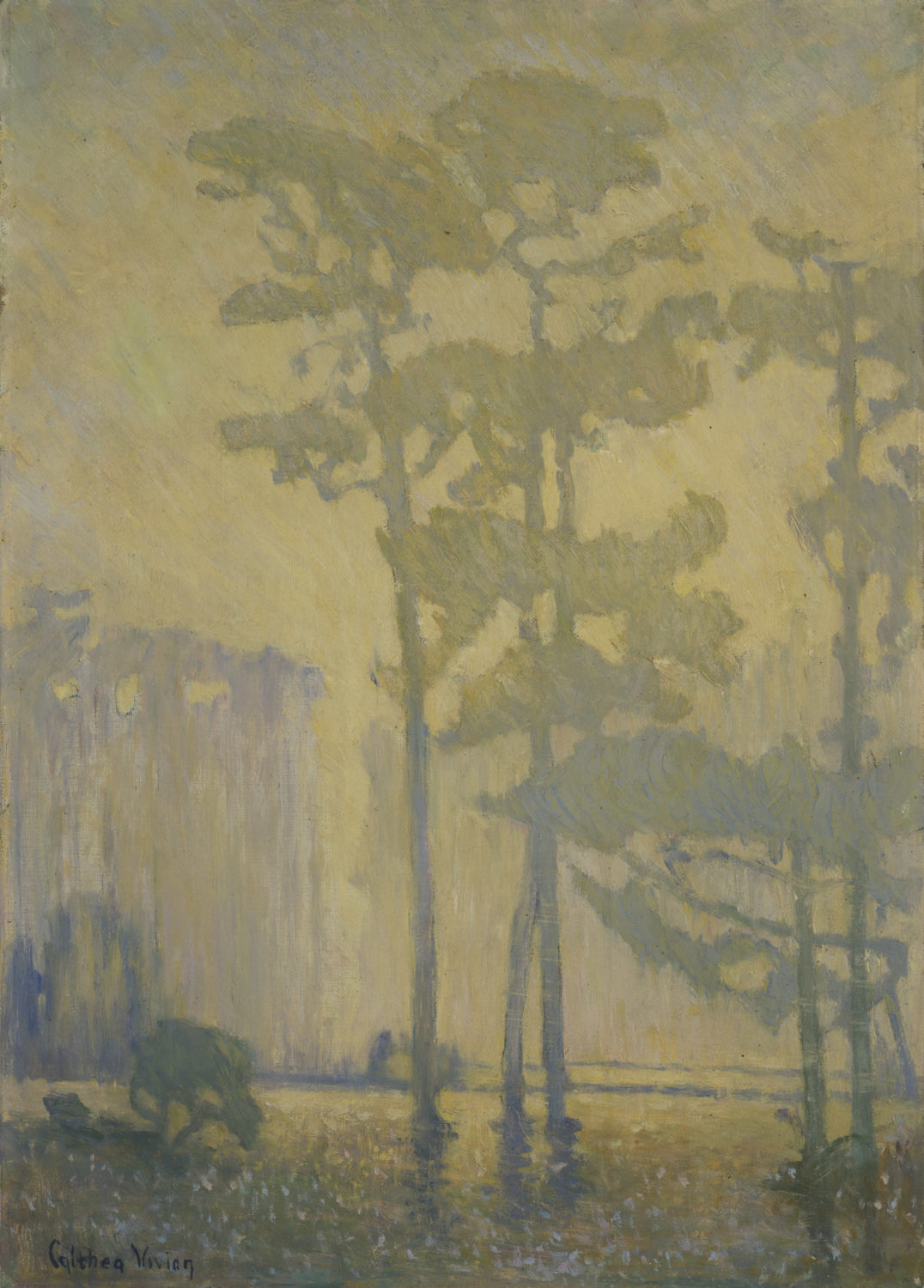
Calthea Vivian: Morning Fog, circa 1915. Oil on canvas, 21 1/8 x 15 1/16 in. (The Buck Collection at UCI Institute and Museum of California Art)
The “Rhythm and Abstraction” section emphasizes the evocative use of line, shape and color. Styles include Pointillism — the dense application of individual dots of unmixed paint to form images, and Divisionism — dashes of paint, operating similarly to Pointillism. Both styles originated in Europe in the 19th century, and were employed by west coast artists in the 20th century. Didactics for this section explain, “When viewed up close, these works approach pure abstraction, delighting in their investigation of the nature of color itself.”
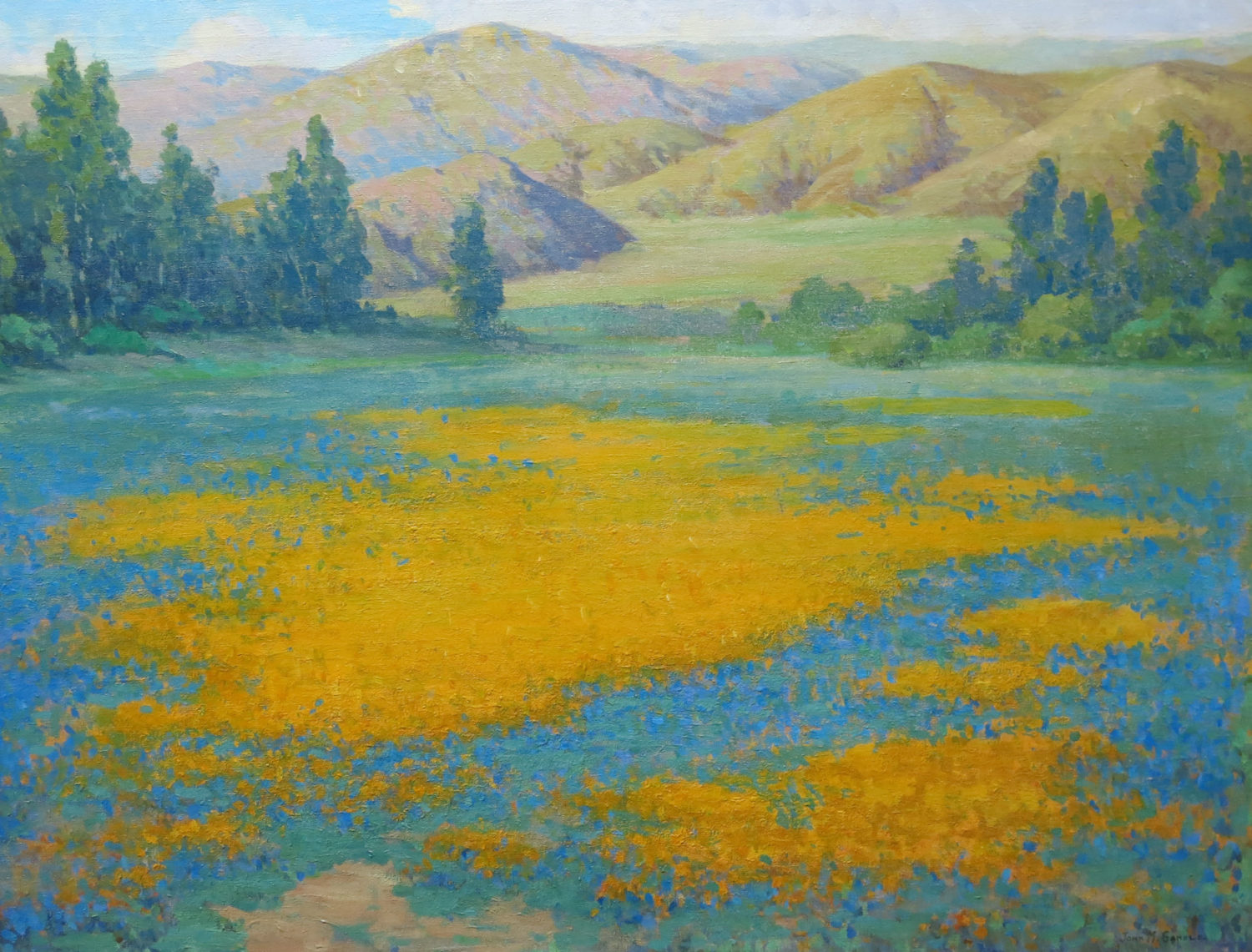
John M. Gamble: Calce de Oro (Poppy Field near Banning), probably completed by 1939. Oil on canvas, 30 1/4 x 40 1/8 in. (UC Irvine Institute & Museum of California Art, Gift of The Irvine Museum)
William Henry Clapp’s Country Road (1943) employs the classic Pointillist technique to illustrate majestic yellow, blue and purple foliage. From a distance, the painting reveals the flickering play of sunlight and shadow. John M. Gamble’s Calce de Oro (Poppy Field near Banning) (1939) is a Pointillist landscape displaying a broad field of orange flowers, among blues and greens. In William A. Gaw’s Divisionist Crescent City Lighthouse (1920), colorful dashes of light create sunlight across the water and rocks, resulting in a vibrant coastal setting; the thickly applied paint adds texture and depth to the work.
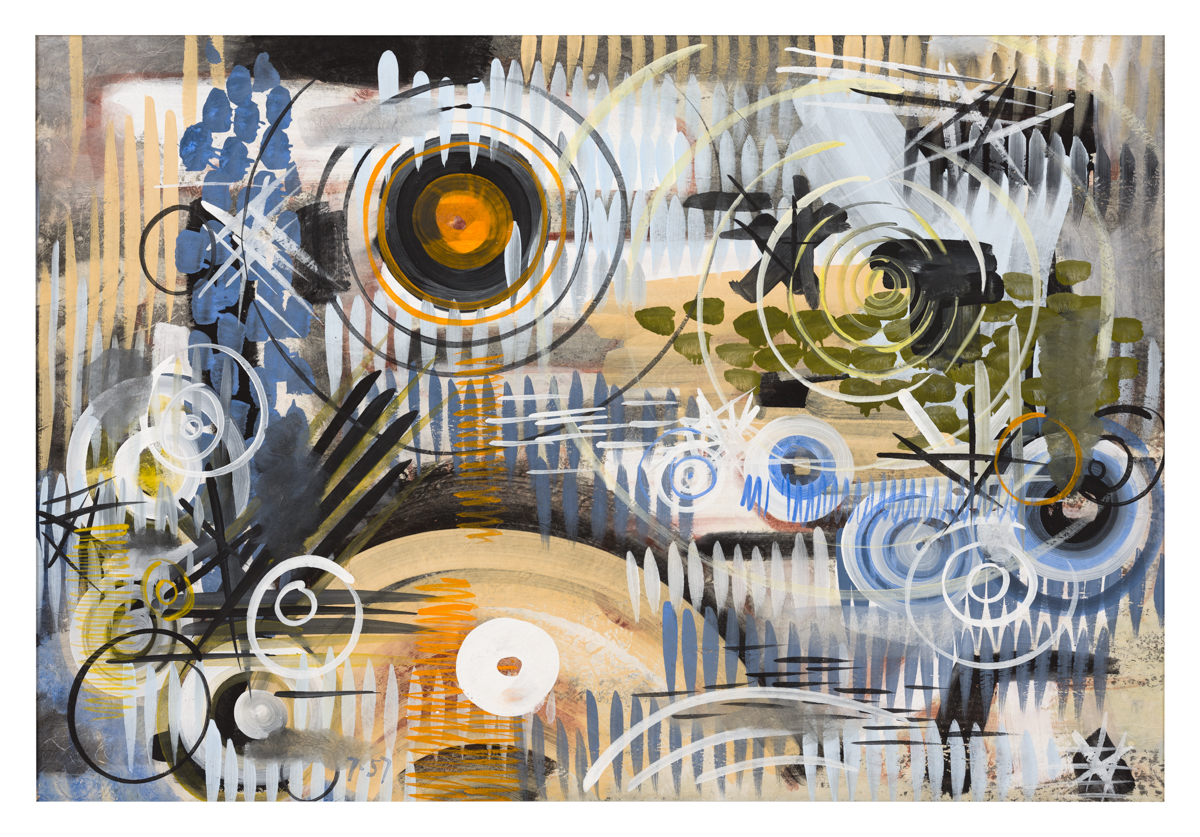
Gordon Onslow Ford: Constellations and Grasses, 1957. Casein on mulberry paper, 38 x 56 in. (The Buck Collection at UCI Institute and Museum of California Art, © Courtesy of the Lucid Art Foundation)
The “Dynamism and Flux” section includes work by Knud Merrild, who first used the term “flux paintings.” His Asymmetric Symmetry (1943) was created by drizzling house paint onto a liquid surface, then tilting it to enable the colors to combine. The resulting abstract painting is smaller and tamer than much of Jackson Pollock’s work, yet embraces similar spontaneity. Gordon Onslow Ford’s dynamically abstract Constellations and Grasses (1957), also in this section, combines a series of overlapping circles in blue, white and brown with large grasses in green. The result is an ethereal vision, suggesting music coming from the heavens.
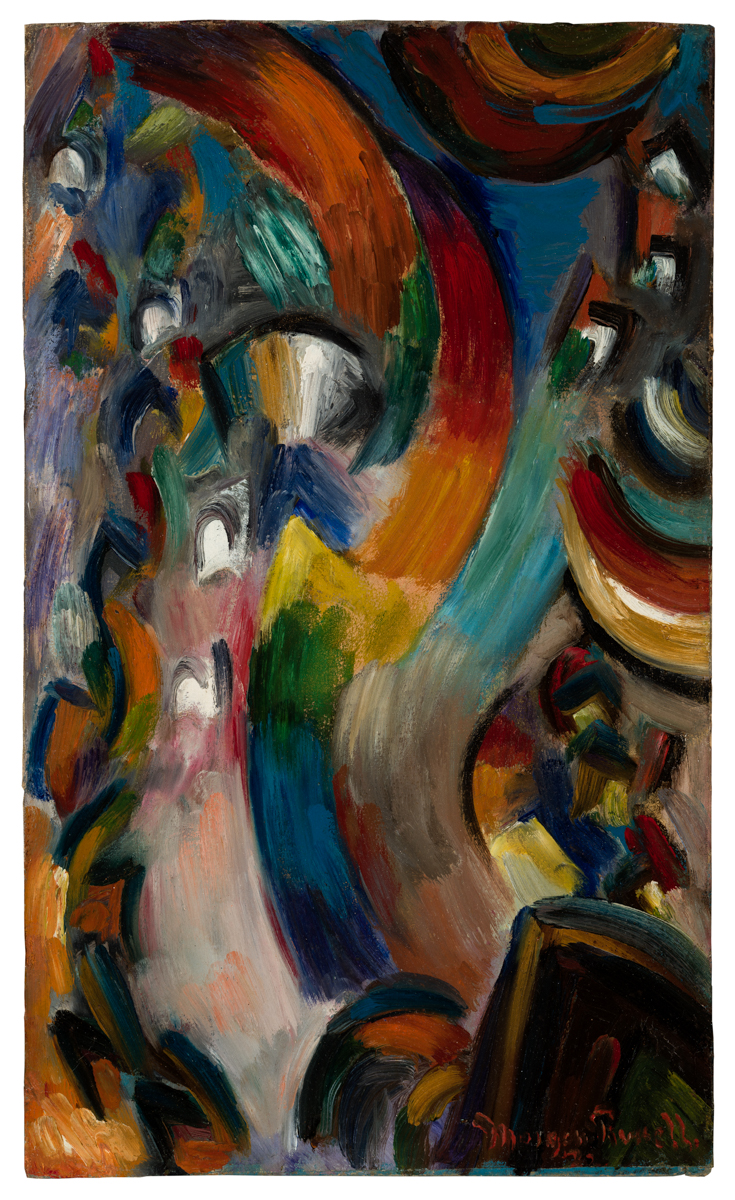
Morgan Russell: Synchromie en orange, 1922. Oil on canvas on board, 18 x 10 3/4 in. (Buck Collection at UCI Institute & Museum of California Art)
The “Visual Music” section exhibits the work of Morgan Russell and Stanton Macdonald-Wright who created the Synchromist movement in the early 20th century. This movement was based on arranging colors in paintings similarly to the way composers write musical compositions, while employing the geometric forms of Cubism and vibrant colors. This section includes Russell’s Synchromie en orange (1922), about which he wrote, “It is only by a sense of continuity or curve that one can produce an effect as emotional as that of music on us. This sense of color-curves sort of carries one around and not only up and down or side to side as line does but is a powerful manner of drawing us into space back and forth in waves.”
Macdonald-Wright’s Le Comble (1955), one of his later Synchromist paintings, is also in this section. It combines bold swaths of primary colors, arranged abstractly, with flowing lines, evoking an Impressionist piece of music, perhaps one by the French composer Erik Satie (1866-1925).
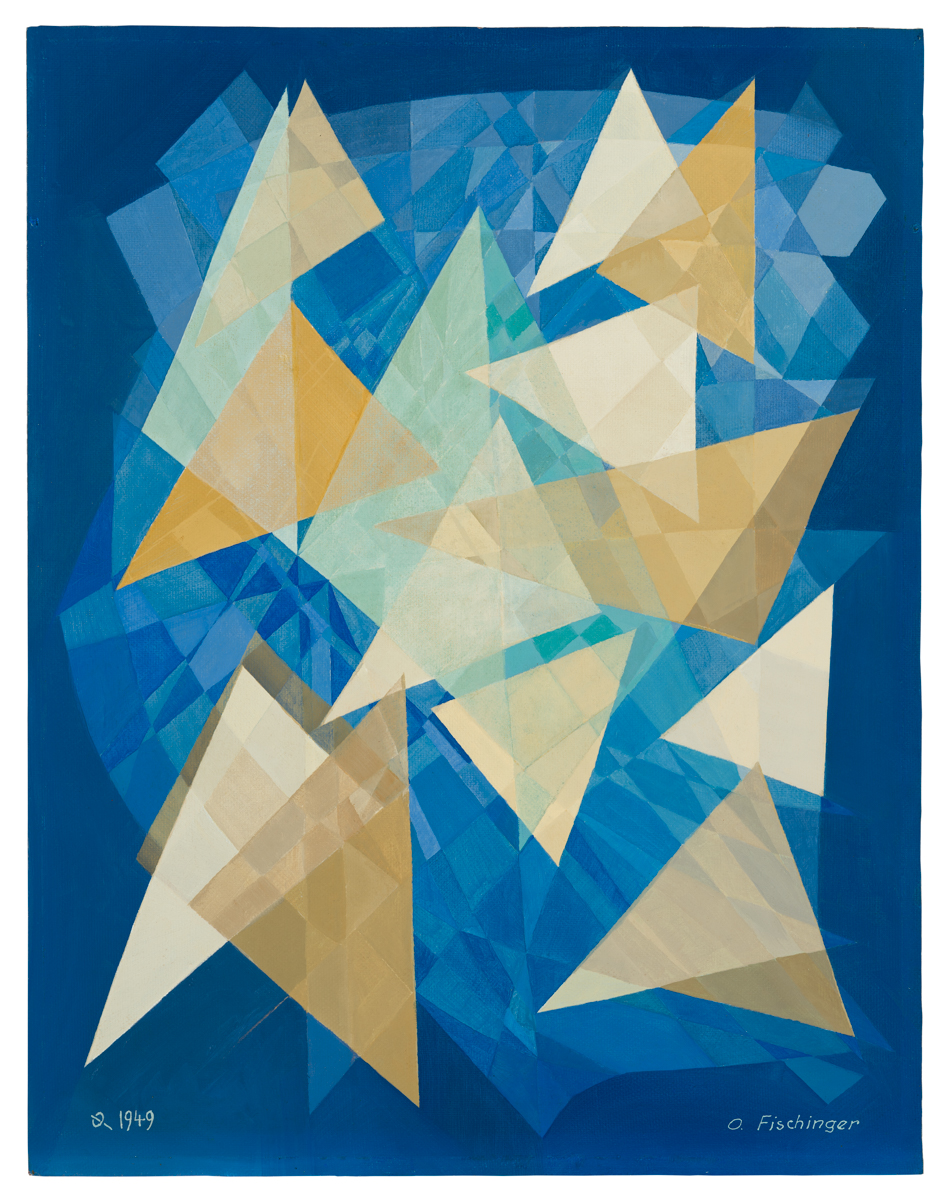
Oskar Fischinger: Triangles / Blue Triangles, 1949. Oil on Masonite, 27 3/4 x 21 5/8 in. (The Buck Collection at UCI Institute and Museum of California Art, © Courtesy of the Elfriede Fischinger Trust)
Another artist in “Visual Music” is Oskar Fischinger. His Triangles / Blue Triangles (1949), an abstract composition of intersecting shapes, suggests both music and film, and he was also an experimental musician and filmmaker. Exhibition didactics explain, “Fischinger’s paintings, which sometimes served as studies for his films, play with our perception of depth and motion through the careful layering of form and color. In these examples, shapes seem to recede in space and lithely dance across the surface.”
In conjunction with this exhibition, IMCA is presenting a range of experiential programs for audience interactions and exchanges, addressing what it means to resonate. These include programs examining the power of the voice, a series of bilingual chats about art in Spanish and English, lunchtime gallery talks, an audiovisual performance by UC Irvine student a cappella group VocaLotus, and a virtual screening of films from Dudley Murphy.
“The Resonant Surface” is on view through February 19, 2022 at the Institute and Museum of California Art., 18881 Von Karman Ave., Irvine; Tuesday – Saturday, 10am–4pm; free; imca.uci.edu.
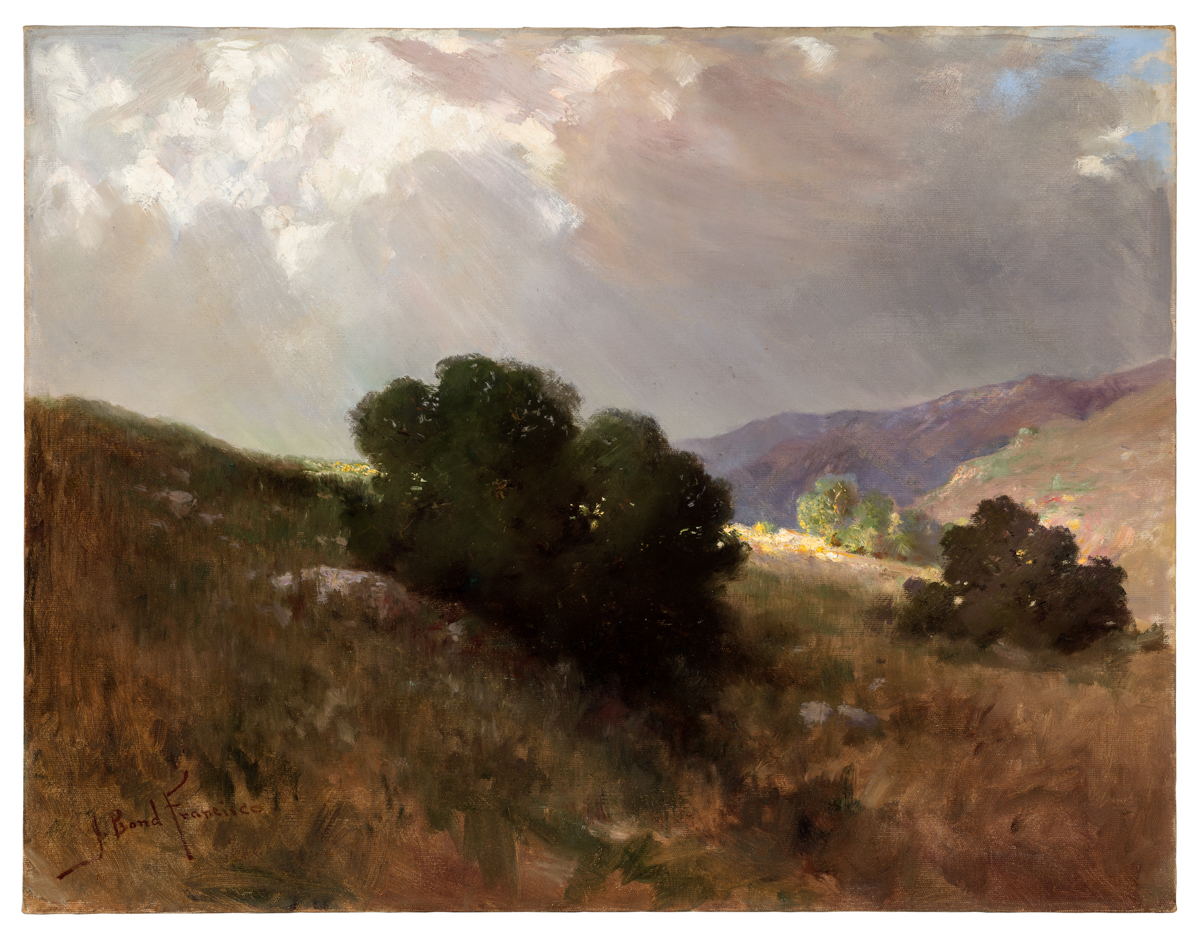
John Bond Francisco: Scrub Oak in a Canyon, possibly circa 1910. Oil on canvas, 26 1/8 x 34 in. (UC Irvine Institute and Museum of California Art, Gift of The Irvine Museum)
The post <i>The Resonant Surface</i> Explores Musicality in Visual Art appeared first on LA Weekly.


0 Commentaires